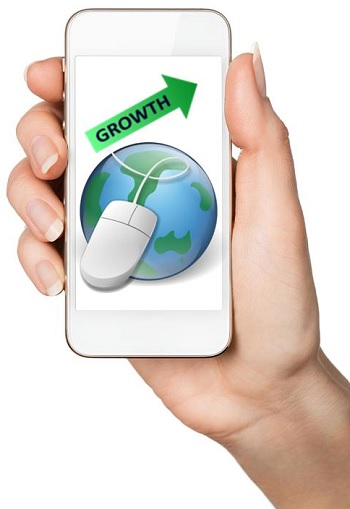The number of people who are accessing ads on their smartphones and tablets has been steadily rising.
According to the a new report that was recently published by Marin Software, mobile marketing is seeing a steady improvement in the number of people who are clicking on ads displayed on their smartphone and tablet screens as they browse the web and shop online.
In fact, the number of clicks of those mobile ads has risen to make up about half of the UK market.
The report showed that fifty percent of all of the clicks that were made to online ads came through mobile marketing channels, revealing the importance of tablets and smartphones to advertising online. It also suggests that there could be a time in the near future in which the number of clicks over mobile devices will exceed that of laptops and desktops.
The conversion rates for clicked ads were also quite high, revealing an increased importance to mobile marketing.
 Among all of the people who clicked on ads – regardless of the device that was used – forty three percent who went on to be converted into paying customers were using smartphones or tablets. This showed that people aren’t just using their mobile devices to browse products and read reviews, but they are also making actual purchases and are completing their transactions.
Among all of the people who clicked on ads – regardless of the device that was used – forty three percent who went on to be converted into paying customers were using smartphones or tablets. This showed that people aren’t just using their mobile devices to browse products and read reviews, but they are also making actual purchases and are completing their transactions.
While desktop and laptop computers may have a higher conversion rate than mobile devices, the issue is that the advertising over that channel costs considerably more than it does in the over mobile. That said, regardless of its growth, mobile advertising has been greatly undervalued.
The annual rise in the number of sales that are being generated over mobile devices is being interpreted by many experts in the industry as a sign that the use of laptops and PCs for the completion of secure online shopping will one day move into the mainstream, instead of being something that only the minority of people actually do. The report showed that the United Kingdom was the only location in Europe in which mobile marketing was shown to be less effective than online advertising over PCs and laptops.

 According to the University of Phoenix executive dean at the college of information systems and technology, Dennis Bonilla, who was also once the vice president at Oracle, a smartwatch and fitness band may seem to be impressive with its helpful features, at the moment, but they are nothing compared to the tech that is on its way to the wearables industry.
According to the University of Phoenix executive dean at the college of information systems and technology, Dennis Bonilla, who was also once the vice president at Oracle, a smartwatch and fitness band may seem to be impressive with its helpful features, at the moment, but they are nothing compared to the tech that is on its way to the wearables industry.